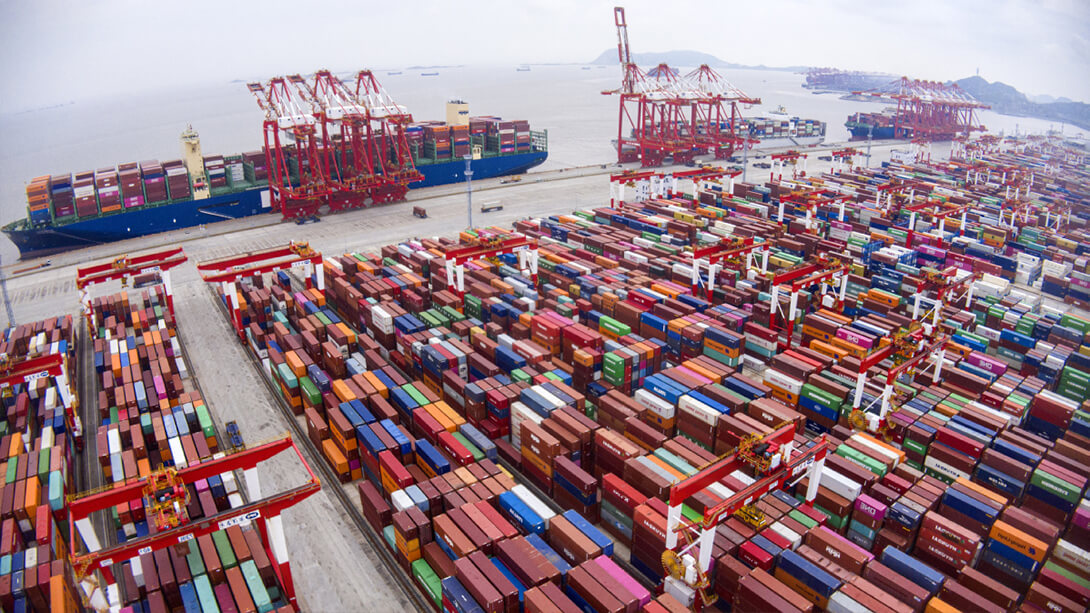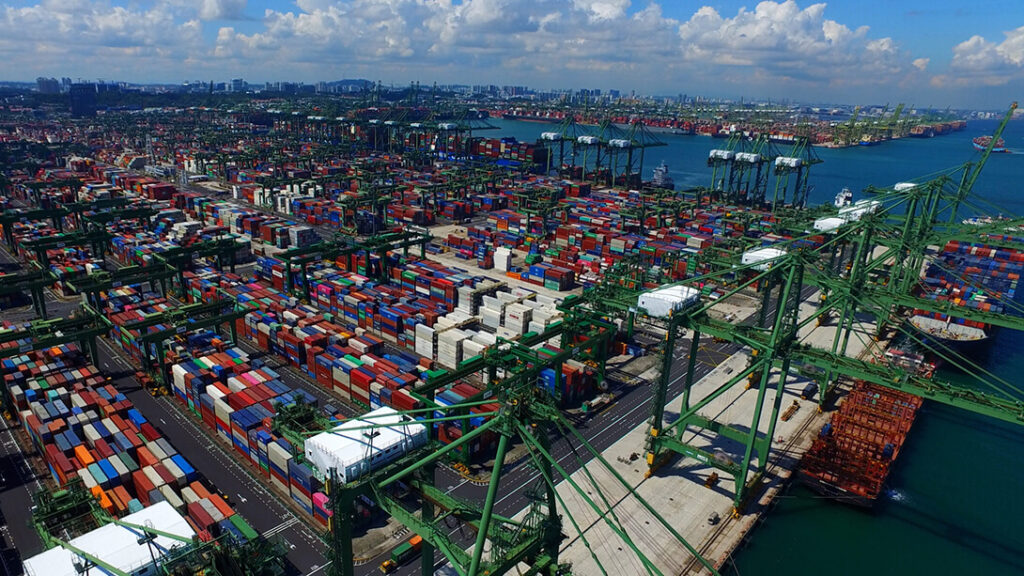Classification Standards for Container Terminals
Date:2023-06-23
The container terminal refers to a place with clear boundaries that can accommodate a complete container loading and unloading operation process, including harbor basins, anchorages, access channels, berths and other waters, as well as freight stations, storage yards, dock fronts, office and living areas, and other land-based areas. Container terminals are divided into five types: Type A, Type B, Type C, Type D, and Type E according to the types of ships they can handle and unload.

- Type A container terminal
Type A container terminal refers to a container terminal whose loading and unloading conditions can meet the operation requirements of a 5000DWT (carrying capacity of about 500TEU) dedicated container ship when it is fully loaded.
The width of its approach channel should be greater than 80 meters, and the water depth of the channel should be greater than 7 meters. The length of a single berth should be greater than 140 meters, and the average length of a single berth for contiguous berths should be greater than 130 meters. The depth of the front of the pier is greater than 30 meters. The berth water depth should be greater than 7 meters.
- Type B container terminal
Type B container dedicated terminal refers to a container terminal whose loading and unloading conditions can meet the operation requirements of a 10,000 DWT (carrying capacity of about 1,000TEU) container dedicated ship when it is fully loaded.
The width of its approach channel should be greater than 99 meters, and the water depth of the channel should be greater than 8.5 meters. A single berth should be greater than 170 meters, and the average single-berth length of contiguous berths should be greater than 155 meters. The depth of the front of the wharf should be greater than 30 meters, and the water depth of the berth should be greater than 8.5 meters.
- Type C container terminal
C-type container terminal refers to the container terminal whose loading and unloading conditions can meet the operation requirements of 30,000 DWT (carrying capacity of about 3,000TEU) dedicated container ships are fully loaded.
The width of its approach channel should be greater than 150 meters, and the water depth of the channel should be greater than 12.5 meters. A single berth should be greater than 301 meters, and the average single berth length of contiguous berths should be greater than 270 meters. The depth of the front of the wharf should be greater than 35 meters, and the water depth of the berth should be greater than 12 meters.
- Type D container terminal
D-type container dedicated terminal refers to the container terminal whose loading and unloading conditions can meet the operation requirements of 50,000DWT (carrying capacity of about 5,000TEU) container dedicated ships are fully loaded.
Its entry channel width should be greater than 165 meters, channel water depth should be greater than 13.5 meters. The length of a single berth should be greater than 353 meters, and the average length of a single berth for contiguous berths should be greater than 320 meters. The depth of the front of the wharf should not be less than 35 meters, and the water depth of the berth should be greater than 13 meters. At least 0.9 container loading and unloading bridges should be equipped per 100 meters of shoreline (at least 3 container handling bridges should be equipped for a single berth), and its outreach should be greater than 35 meters. The rated efficiency of each loading and unloading bridge should be greater than 40 boxes/h.
- Type E container terminal
E-type container terminal refers to the container terminal whose loading and unloading conditions can meet the operating requirements of container ships with a capacity of 70,000 DWT or more (container capacity of 6,000 TEU or more) when they are fully loaded.
The width of its approach channel should be greater than 189 meters, and the water depth of the channel should be greater than 14.6 meters. The length of a single berth should be greater than 360 meters, and the average length of a single berth for contiguous berths should be greater than 330 meters. The depth of the front of the wharf should be greater than 45 meters, and the water depth should be greater than 14 meters.
At least 1.0 container loading and unloading bridges should be equipped per 100 meters of shoreline (at least 4 container handling bridges should be equipped for a single berth), and its outreach should be greater than 43 meters. The rated efficiency of each loading and unloading bridge should be greater than 50 boxes/h.

Next: How much do you know about marine cargo transport ships?
RELATED
- United States Tender – Repairing and Replacing Rubber Fender at Pier 3, Nawiliwili Harbor, Kauai
- What is the pneumatic rubber fender?
- 250 Ton T type Bollards worked very well
- High-Performance Pneumatic Fenders Ready for STS Operation
- What affects the performance of ship launching airbags?
- A batch of DD Fenders Successfully delivered to Europe
- New batch of cylindrical fenders were delivered in advance
- What kind of rubber fenders are used on tugboats?

